In the February edition of Booknews, you’ll find out about the latest books from Meg Gardiner, Alex Berenson, Dennis Palumbo, Tim Dorsey, Martin Edwards, and so much more! Click here to view the PDF
Kristin Hannah’s The Great Alone
Today is release date for Kristin Hannah’s novel of Alaska, The Great Alone. You can order signed copies through the Web Store. https://bit.ly/2FMA3NA
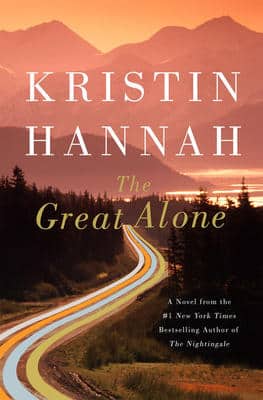
Here’s the summary.
“A TOUR DE FORCE.” —Kirkus (starred review)
Alaska, 1974.
Unpredictable. Unforgiving. Untamed.
For a family in crisis, the ultimate test of survival.
Ernt Allbright, a former POW, comes home from the Vietnam war a changed and volatile man. When he loses yet another job, he makes an impulsive decision: he will move his family north, to Alaska, where they will live off the grid in America’s last true frontier.
Thirteen-year-old Leni, a girl coming of age in a tumultuous time, caught in the riptide of her parents’ passionate, stormy relationship, dares to hope that a new land will lead to a better future for her family. She is desperate for a place to belong. Her mother, Cora, will do anything and go anywhere for the man she loves, even if means following him into the unknown.
At first, Alaska seems to be the answer to their prayers. In a wild, remote corner of the state, they find a fiercely independent community of strong men and even stronger women. The long, sunlit days and the generosity of the locals make up for the Allbrights’ lack of preparation and dwindling resources.
But as winter approaches and darkness descends on Alaska, Ernt’s fragile mental state deteriorates and the family begins to fracture. Soon the perils outside pale in comparison to threats from within. In their small cabin, covered in snow, blanketed in eighteen hours of night, Leni and her mother learn the terrible truth: they are on their own. In the wild, there is no one to save them but themselves.
In this unforgettable portrait of human frailty and resilience, Kristin Hannah reveals the indomitable character of the modern American pioneer and the spirit of a vanishing Alaska—a place of incomparable beauty and danger.The Great Alone is a daring, beautiful, stay-up-all-night story about love and loss, the fight for survival, and the wildness that lives in both man and nature.
*****
Here’s Kristin Hannah discussing The Great Alone.
[youtube https://www.youtube.com/watch?v=dHvhfLp3wmA?rel=0&w=560&h=315]
And, here’s the book trailer for The Great Alone.
[youtube https://www.youtube.com/watch?v=NT_NehX9Jzc?rel=0&w=560&h=315]
Dana Stabenow on Research
We’ve had a few lessons about writing on the blog lately. Diana Gabaldon showed how she composes a sentence. Dana Stabenow wrote about the importance of setting. Now, Stabenow, the author of Silk and Song, talks about the research she does for her books. It was essential to do that for Silk and Song, her novel about Marco Polo’s granddaughter and the Silk Road. Copies of the book are available through the Web Store. https://bit.ly/2E1Ifci
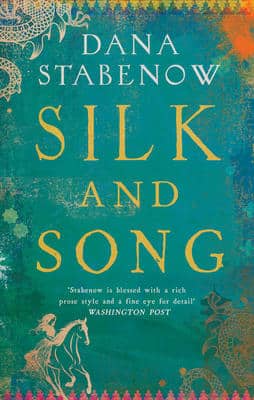
Dana Stabenow’s post about research was originally written for M.K. Tod’s “A Writer of History”. Here’s the link to that article. https://bit.ly/2EG5MB1
Hot Book of the Week – Need to Know by Karen Cleveland
Karen Cleveland’s Need to Know is the current Hot Book of the Week at the Poisoned Pen. You can order a signed copy through the Web Store. https://bit.ly/2EAQygx
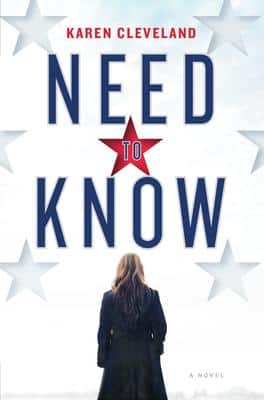
Here’s the summary of this week’s Hot Book.
Perfect husband. Perfect father. Perfect liar?
“Terrific.”—John Grisham
“Superb.”—Lee Child
“Breathtaking, heart-pounding.”—Louise Penny
“A fast-paced, relentlessly gripping read.”—Chris Pavone
In pursuit of a Russian sleeper cell on American soil, CIA analyst Vivian Miller uncovers a dangerous secret that will threaten her job, her family—and her life. On track for a much-needed promotion, she’s developed a system for identifying Russian agents, seemingly normal people living in plain sight.
After accessing the computer of a potential Russian operative, Vivian stumbles on a secret dossier of deep-cover agents within America’s borders. A few clicks later, everything that matters to her—her job, her husband, even her four children—is threatened.”Ž
Vivian has vowed to defend her country against all enemies, foreign and domestic. But now she’s facing impossible choices. Torn between loyalty and betrayal, allegiance and treason, love and suspicion, who can she trust?
Film rights sold to Universal Pictures for Charlize Theron “¢ Rights sold in more than 20 markets
“Shaping up to be one of the year’s biggest new thrillers.”—Entertainment Weekly
“So timely . . . Think of the perfect mix of Homeland and The Americans. . . . Need to Know needs to be read by all who relish spy novels. As entertaining as it is informative and as irresistible as it is impossible to put down.”—Providence Journal
“Pulse-pounding.”—O: The Oprah Magazine
“Accomplished . . . a nonstop thriller tapping into a hot mix of contemporary digital counterintelligence, old-school spying and ageless family drama.”—Shelf Awareness
“An early contender for next year’s Gone Girl.”—GQ (UK)
“The Russia page-turner that should be on everyone’s list.”—New York Post
Gregg Hurwitz @ The Poisoned Pen
Have you been waiting for Gregg Hurwitz’ new Orphan X book, Hellbent? You can order it from the Web Store, and if you order now, you can buy a signed first edition that comes with a CIA letter that ties in with the book. https://bit.ly/2Eyuz9S
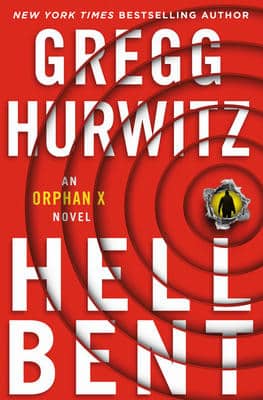
Here’s the summary of the book.
Evan Smoak—government assassin gone rogue—returns inHellbent, an engrossing, unputdownable thriller from Gregg Hurwitz, the latest in his #1 international bestselling Orphan X series.
Taken from a group home at age twelve, Evan Smoak was raised and trained as an off-the-books government assassin: Orphan X. After he broke with the Orphan Program, Evan disappeared and reinvented himself as the Nowhere Man, a man spoken about only in whispers and dedicated to helping the truly desperate.
But this time, the voice on the other end is Jack Johns, the man who raised and trained him, the only father Evan has ever known. Secret government forces are busy trying to scrub the remaining assets and traces of the Orphan Program and they have finally tracked down Jack. With little time remaining, Jack gives Evan his last assignment: find and protect his last protégé and recruit for the program.
But Evan isn’t the only one after this last Orphan—the new head of the Orphan Program, Van Sciver, is mustering all the assets at his disposal to take out both Evan (Orphan X) and the target he is trying to protect.
*****
I know most of us reading this blog missed the event. Patrick Millikin from the Poisoned Pen interviewed Gregg Hurwitz.
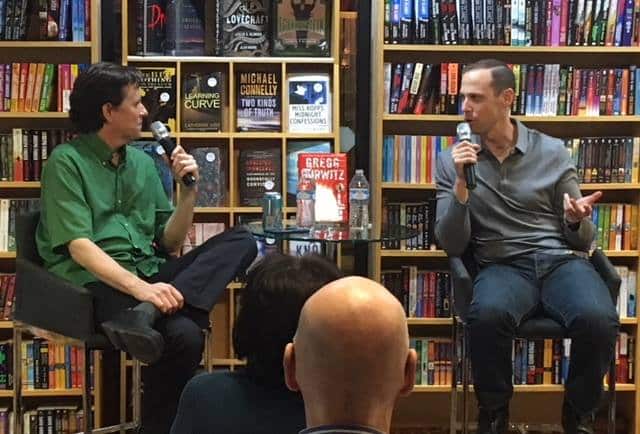
But, if you missed it, you can now watch the interview on Livestream. https://livestream.com/poisonedpen/events/8038276
Enjoy!
How Diana Gabaldon Writes a Sentence
Are you a fan of Diana Gabaldon’s Outlander series? You can check for her books in the Web Store. https://bit.ly/2DVhCdn
Would you like to see how Diana Gabaldon crafts a sentence? Here’s a fun video.
[youtube https://www.youtube.com/watch?v=CbJ1Hn55nOw?rel=0&w=560&h=315]
Introducing Tom Hunt
It’s always fun to introduce a debut author to readers. Tom Hunt just appeared at the Poisoned Pen, and author Stephen Coonts had the opportunity to introduce him to his first audience. His debut thriller is Killer Choice. You can be one of the first to discover his writing, and order a signed copy through the Web Store. https://bit.ly/2FxOaWS
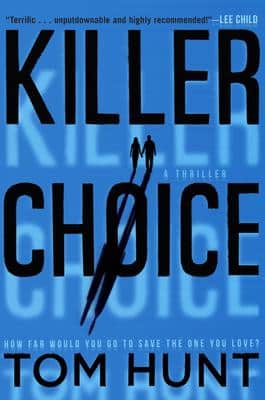
Here’s the summary of the book.
“Terrific…full of shocks and twists you won’t see coming—unputdownable and highly recommended!”—Lee Child, #1 New York Times bestselling author
The electrifying debut thriller that asks the question: To save the one you love, is there any price you wouldn’t pay?
His wife is sick.
He needs $200,000 to save her.
A mysterious man offers to give him the money with just one catch: He has to murder someone to get it.
Gary Foster’s life is finally heading in the right direction. After years of trying, his wife, Beth, is pregnant, and he recently opened a business with his brother. But one phone call changes everything….
After collapsing suddenly, Beth has been rushed to the hospital. Tests reveal a devastating diagnosis: an inoperable brain tumor. Their only hope is an expensive experimental treatment available abroad, with a cost that’s out of their reach. And Beth’s time is running out….
Then a strange man approaches Gary and offers the money he needs, on one condition: that he kill someone, no questions asked. End one life to save another.
In this nail-biting debut novel of domestic suspense, one man makes a choice that forces him to confront the darkest reaches of his soul and betray those closest to him. As he’s swept up in a nightmare of escalating violence, he must question his own morality—and determine just how far he’s willing to go to save the woman he loves.
*****
And, you can “meet” Tom Hunt here, in his Livestream interview with Stephen Coonts. https://livestream.com/poisonedpen/events/8036637
Donis Casey’s Favorites of 2017

You may remember the lists of favorite crime novels from the other authors appeared earlier in the month. Donis Casey and I agreed that her post would go up close to release date for her latest Alafair Tucker mystery. Tuesday, Feb. 6 will see the tenth book in the Alafair Tucker series, Forty Dead Men. You can pre-order signed copies through the Web Store. Or, you could order earlier books in this series, books with catchy titles based on expressions once common in Oklahoma. https://bit.ly/2F9BIwo
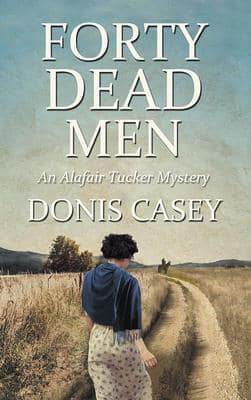
Alafair Tucker is an Oklahoma farm wife and mother of nine in the early twentieth century. Each mystery revolves around one of Alafair’s family members. Here’s the summary of Forty Dead Men.
Some people who have experienced a shocking, dangerous, or terrifying event develop Post Traumatic Stress Disorder. It is recognized today as a debilitating but potentially treatable mental health condition. Military veterans are a vulnerable group. But PTSD can deliver a knockout blow to anyone, as the remarkable unfolding of the tenth Alafair Tucker Mystery, Forty Dead Men, shows.
World War I is over. Alafair is overjoyed that her elder son, George Washington Tucker, has finally returned home from the battlefields of France. Yet she is the only one in the family who senses that he has somehow changed.
Gee Dub moves back into his old bunkhouse quarters, but he’s restless and spends his days roaming. One rainy day while out riding he spies a woman trudging along the country road. She’s thoroughly skittish and rejects his help. So Gee Dub cannily rides for home to enlist his mother in offering the exhausted traveler shelter.
Once made comfortable at the Tucker farm, Holly Johnson reveals she’s forged her way from Maine to Oklahoma in hopes of finding the soldier she married before he shipped to France. At the war’s end, Daniel Johnson disappeared without a trace. It’s been months. Is he alive? Is she a widow?
Holly is following her only lead – that Dan has connected with his parents who live yonder in Okmulgee. Gee Dub, desperate for some kind of mission, resolves to shepherd Holly through her quest although the prickly young woman spurns any aid. Meanwhile, Alafair has discovered that Gee Dub sleeps with two cartridge boxes under his pillow – boxes containing twenty “dead men” each. The boxes are empty, save for one bullet. She recognizes in Gee Dub and Holly that not all war wounds are physical.
Then Holly’s missing husband turns up, shot dead. Gee Dub is arrested on suspicion of murder, and the entire extended Tucker family rallies to his defense. He says he had no reason to do it, but the solitary bullet under Gee Dub’s pillow is gone. Regardless, be he guilty or innocent, his mother will travel any distance and go to any lengths to keep him out of prison.
*****
I knew Donis is quite busy between writing and family responsibilities. I appreciate her time. Thank you, Donis, for these suggestions. Readers can look for her favorites in the Web Store. https://store.poisonedpen.com/
*****
The Secret, Book, and Scone Society, by Ellery Adams.
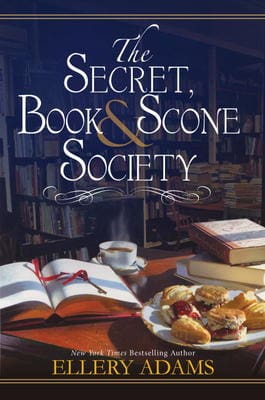
I love the premise of this first novel in Adams’ new series. Nora Pennington, the owner of Miracle Books in Miracle Springs North Carolina, has the uncanny ability to recommend the perfect books to her patrons to help them solve their problems. She and three other women form the Secret, Book, and Scone Society to try and figure out if a death which has been ruled a suicide is really a murder—and end up sharing secrets from their own painful pasts. I always knew that books have magical properties, and this novel proves it.
Fool’s River, by Timothy Hallinan.
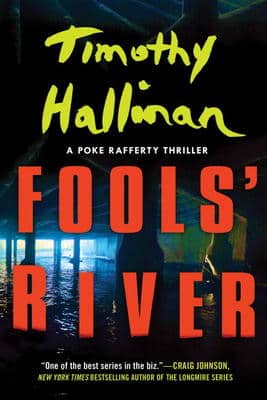
An emergency visit from Edward Dell, the almost-boyfriend of Poke Rafferty’s teenage daughter, Miaow, sends Poke on a frantic search to locate the boy’s father, Buddy, a middle-aged “sexpat” who has disappeared under mysterious circumstances. I get lost in Hallinan’s dense, poetic prose. Every time I crack open a Poke Rafferty mystery, I can count on feeling the heat, smelling the dust and spice and funk of Bangkok. Fool’s River does not disappoint. I’ve been following Poke, Rose, and Miaow since A Nail Through the Heart, first in the series. It’s been deeply satisfying to see these three solitary souls cohere into a true family over the course of eight novels. I care what happens to Poke and his family and friends as though they are real people.
Holding, by Graham Norton.
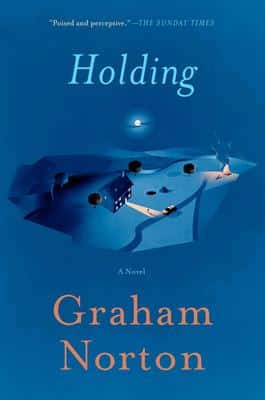
Graham Norton is a British comedian and television personality, so his wistful debut novel is a surprising departure from his usual fare. Norton’s protagonist, Sergeant PJ Collins, is a lonely, overweight policeman in the tiny town of Duneen, Ireland. PJ has never had to deal with any really serious crime, not until the construction crew at a new housing development digs up human bones. PJ doesn’t have much faith in his own abilities, and neither, it seems, does anyone else in the county. I love a misfit character who rises to the occasion, and Norton has created a true original in PJ.
A Useful Woman, by Darcie Wilde.
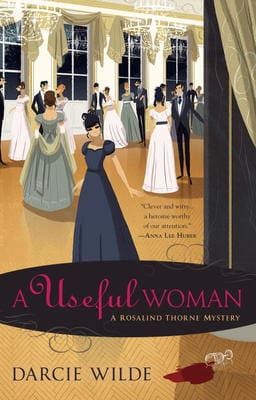
Wilde’s description of the fashionable world of early 19th Century London, with it’s false facade of manners and propriety, is spot on. Resourceful Rosalind Thorne may have lost everything, including her place in society, when she and her mother were abandoned by her profligate father, but she has managed to maintain a precarious place among the elite by becoming a “useful woman” who manages the affairs of wealthy ladies. Historical novels are my first literary love, and if an author can create such a vivid portrait of a time and place that I feel like I have actually lived there awhile, that is jake with me. Wilde does it admirably in this impressive first novel in her Regency mystery series.
*****
Thank you, again, Donis. And, readers? You should be checking out Donis’ Alafair Tucker books.
Agatha Award Nominations
Malice Domestic has announced the nominations for the 2017 Agatha Awards. The Agathas are given for traditional mysteries published during 2017. They will be presented at the Agatha Awards banquet on April 28. The attendees at Malice Domestic 30 will vote for the winners. Congratulations to all of the nominees. Look for the mysteries in the Web Store. https://store.poisonedpen.com
Best Contemporary Novel
Death Overdue: A Haunted Library Mystery by Allison Brook (Crooked Lane Books)
A Cajun Christmas Killing: A Cajun Country Mystery by Ellen Byron (Crooked Lane Books)
No Way Home: A Zoe Chambers Mystery by Annette Dashofy (Henery Press)
Take Out by Margaret Maron (Grand Central Publishing)
Glass Houses: A Chief Inspector Gamache Novel by Louise Penny (Minotaur Books)
Best Historical Novel
In Farleigh Field by Rhys Bowen (Lake Union Publishing)
Murder in an English Village: A Beryl and Edwina Mystery by Jessica Ellicott (Kensington)
Called to Justice: A Quaker Midwife Mystery by Edith Maxwell (Midnight Ink)
The Paris Spy: A Maggie Hope Mystery by Susan Elia MacNeal (Bantam)
Dangerous to Know: A Lillian Frost and Edith Head Novel by Renee Patrick (Forge)
Best First Novel
Adrift: A Mer Cavallo Mystery by Micki Browning (Alibi-Random House)
The Plot is Murder: Mystery Bookshop by V.M. Burns (Kensington)
Hollywood Homicide: A Detective by Day Mystery by Kellye Garrett (Midnight Ink)
Daughters of Bad Men by Laura Oles (Red Adept Publishing)
Protocol: A Maggie O’Malley Mystery by Kathleen Valenti (Henery Press)
Best Nonfiction
From Holmes to Sherlock: The Story of the Men and Women Who Created an Icon by Mattias Boström (Mysterious Press)
The Story of Classic Crime in 100 Books by Martin Edwards (Poisoned Pen Press)
American Fire: Love, Arson and Life in a Vanishing Land by Monica Hesse (Liveright Publishing Corp.)
Rewrite Your Life: Discover Your Truth Through the Healing Power of Fiction by Jess Lourey (Conari Press) Manderley
Forever: A Biography of Daphne du Maurier by Tatiana de Rosnay (St. Martin’s Press)
Best Short Story
Double Deck the Halls by Gretchen Archer (Henery Press)
“Whose Wine is it Anyway” by Barb Goffman in 50 Shades of Cabernet (Koehler Books)
“The Night They Burned Miss Dixie’s Place” by Debra Goldstein in Alfred Hitchcock’s Mystery Magazine (May/June 2017)
“The Library Ghost of Tanglewood Inn” by Gigi Pandian (Henery Press)
“A Necessary Ingredient” by Art Taylor in Cost to Coast: Private Eyes from Sea to Shining Seat (Down & Out Books)
Best Children’s/Young Adult
City of Angels by Kristi Belcamino (Polis Books)
Sydney Mackenzie Knocks ‘Em Dead by Cindy Callaghan (Aladdin)
The World’s Greatest Detective by Caroline Carlson (HarperCollins)
Audacity Jones Steals the Show by Kirby Larson (Scholastic Press)
The Harlem Charade by Natasha Tarpley (Scholastic Press)
Hot Book of the Week – Mick Herron’s This Is What Happened
Are you familiar with the current Hot Book of the Week at the Poisoned Pen? It’s Mick Herron’s This Is What Happened. You can order a signed copy through the Web Store. https://bit.ly/2nbwTMJ
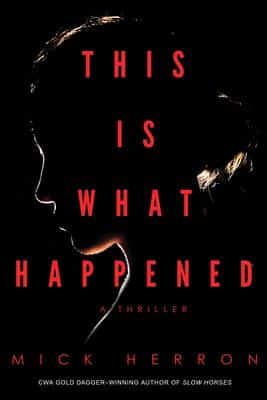
Here’s the summary.
From CWA Gold & Steel Dagger winner Mick Herron comes a shocking, twisted novel of thrilling suspense about one woman’s attempt to be better than ordinary.
Twenty-six-year-old Maggie Barnes is someone you would never look at twice. Living alone in a month-to-month sublet in the huge city of London, with no family but an estranged sister, no boyfriend or partner, and not much in the way of friends, Maggie is just the kind of person who could vanish from the face of the earth without anyone taking notice. Or just the kind of person MI5 needs to infiltrate the establishment and thwart an international plot that puts all of Britain at risk.
Now one young woman has the chance to be a hero—if she can think quickly enough to stay alive.
